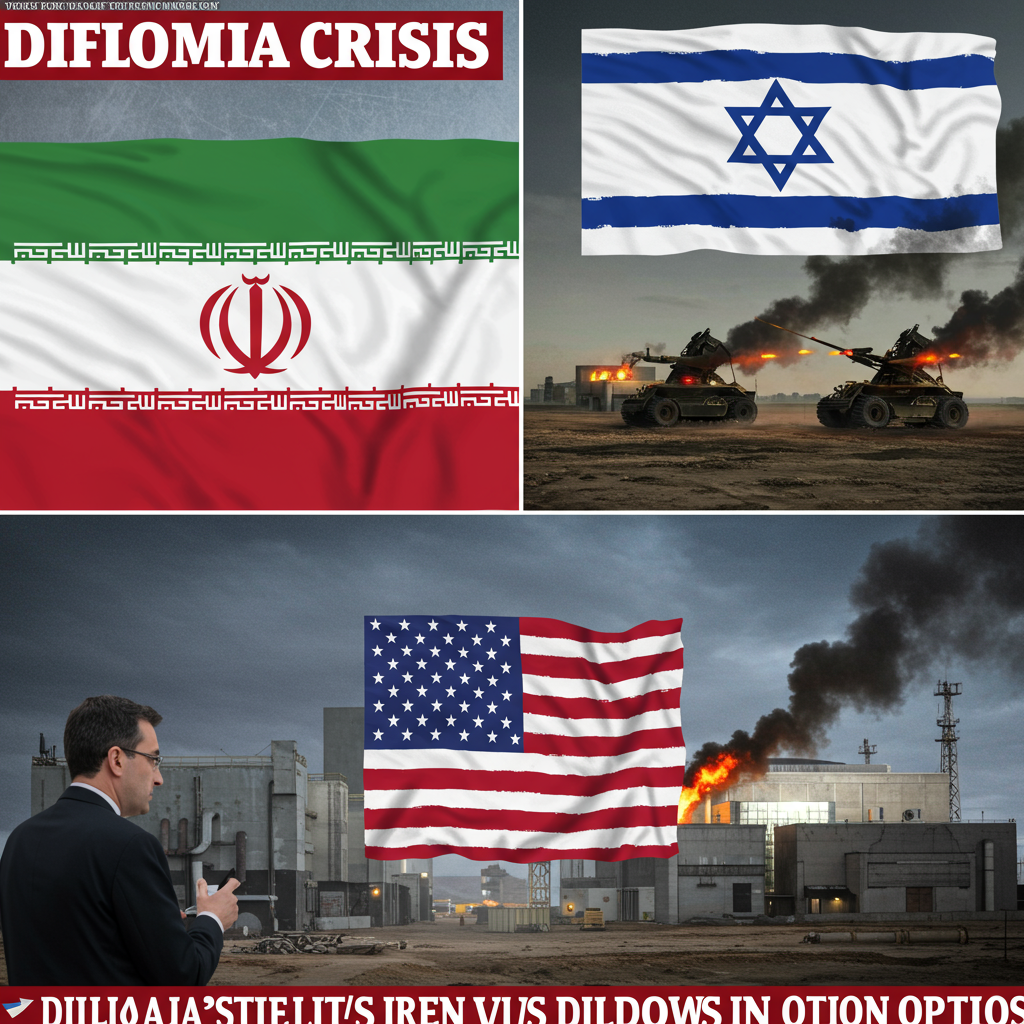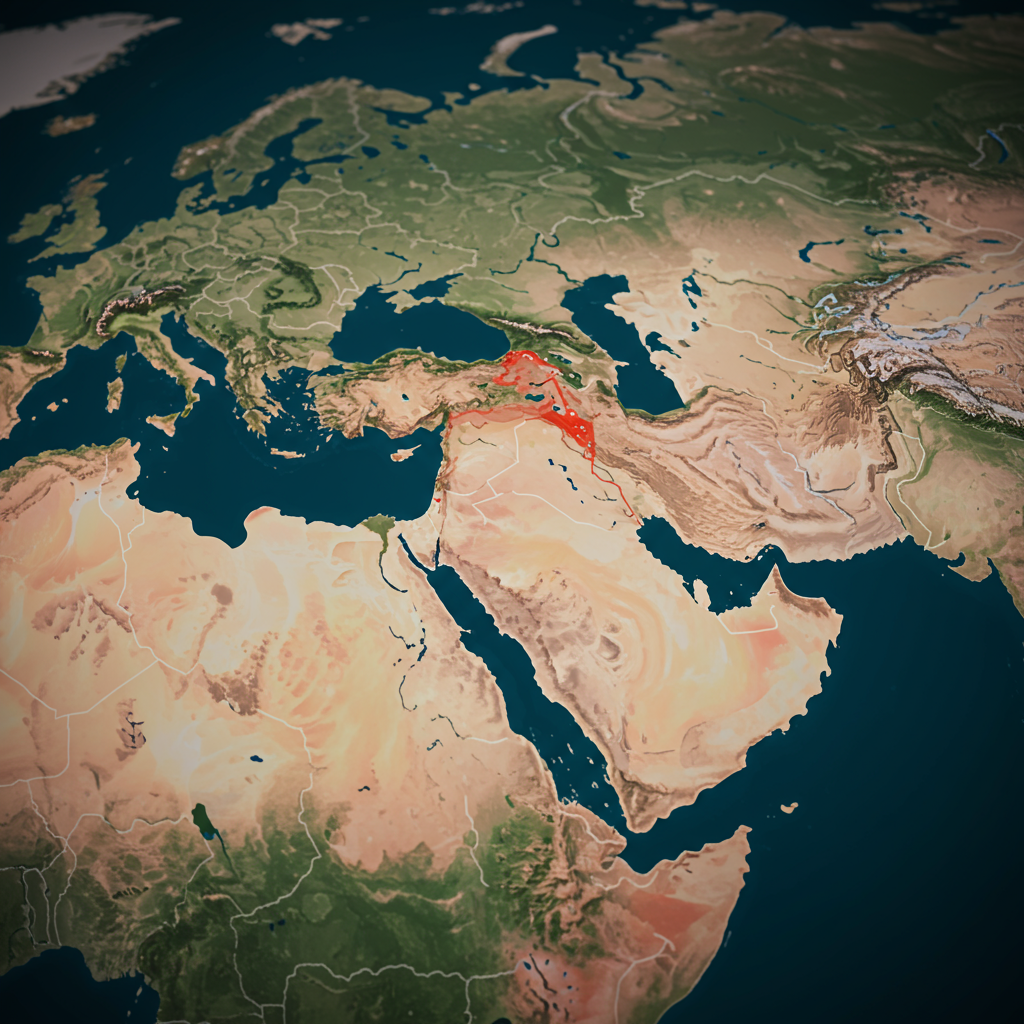As the Israel-Iran crisis enters its second week, the critical question looms: can diplomacy succeed in de-escalating tensions, or will military force become inevitable? With the conflict now nearing its tenth day, international focus remains sharply divided between seeking a negotiated settlement and the potential for the United States to employ military action, particularly against Iran’s nuclear infrastructure like the heavily fortified Fordow enrichment facility.
The current military dynamic sees Israel maintaining air superiority and the ability to strike targets within Iran relatively unhindered. Iran, while still launching missile salvos, appears to be doing so in reduced numbers, suggesting a depletion of its stockpile or launch capabilities. This tactical equation clearly favors Israel, whose military position is likely consolidating further. However, this military advantage doesn’t offer a clear strategic endpoint, especially regarding Iran’s controversial nuclear program.
The Struggle for a Diplomatic Solution
Despite being the preferred outcome, the path towards a diplomatic resolution is facing significant hurdles. Recent talks held in Geneva between Iran and European allies reportedly yielded no progress, with Iran clinging to its pre-crisis demands. The absence of the United States from these discussions further diminished their potential impact. While discreet, potentially more direct engagements might be occurring between Washington and Tehran via intermediaries like Qatar and Oman, the official diplomatic track currently lacks meaningful traction.
A specific proposal reportedly put forth by a US envoy some six weeks ago remains a key “off-ramp.” This balanced plan would see Iran gradually dismantle its enrichment activities in exchange for participating in a monitored international consortium providing nuclear fuel for a peaceful civilian program. Iran’s continued reluctance to directly address this proposal, both before and during the crisis, could prove to be a critical misstep, potentially closing the door on the most viable diplomatic escape route.
Escalating Military Posture
In parallel with stalled diplomatic efforts, the United States is significantly bolstering its military presence in the Middle East, amassing a force that will soon include three carrier strike groups. Such a massive show of force hasn’t been seen in the region since 2012, another period marked by diplomatic deadlock over Iran’s nuclear ambitions and threats to critical shipping lanes like the Strait of Hormuz.
This substantial military positioning serves a dual purpose. Firstly, it acts as leverage, reinforcing the diplomatic pressure by signaling to Iran that the US is fully prepared to use force to neutralize sites like Fordow if diplomacy fails by the end of the designated two-week window. Secondly, it constitutes genuine preparation for a strike, an operation Iran would likely be unable to effectively defend against. The greater the visible US military readiness, the more potent the incentive for Iran to reconsider its stance and potentially engage with the American proposal.
Potential Scenarios for the Crisis Ahead
Considering the current state of affairs, experts outline several potential paths the crisis could follow:
- A Diplomatic Settlement: This remains the ideal outcome, contingent on Iran engaging constructively with the US proposal and leveraging the limited time remaining within the diplomatic window.
- US Military Action: President Trump has clearly ordered preparations for a strike aimed at destroying key nuclear infrastructure, particularly Fordow. This scenario sees the US directly intervening if diplomatic efforts collapse after the two-week deadline.
- Independent Israeli Action: While the US is preparing for a potential strike, uncertainty remains over whether a final order would be given. Israeli Prime Minister Benjamin Netanyahu has suggested Israel possesses independent capabilities to target deep facilities like Fordow, possibly referencing tactics seen in past operations (“Operation Many Ways”). However, executing such a high-risk mission deep inside Iran presents significant challenges compared to targeting missile facilities. Despite the difficulties, Israel is likely exploring all options to ensure the Fordow facility is dealt with.
- The Crisis Continues Unresolved: Without a decisive diplomatic breakthrough or military action to dismantle key nuclear sites, the conflict could simply persist. In this scenario, Israel would likely maintain control of Iran’s airspace and continue targeted strikes, while Iran would respond with increasingly limited missile attacks. The net result would be an inconclusive stand-off where Iran retains enrichment capacity but Israel exerts control to prevent its weaponization, with floundering diplomacy in the background.
Based on current trajectories, the most probable outcomes appear to be either US military intervention (Scenario 2) or a protracted, unresolved conflict (Scenario 4), even as efforts continue to push for the preferred diplomatic resolution (Scenario 1).
Strategies to Rekindle Diplomacy
Given the urgency and the preference for a diplomatic resolution, how might stalled talks be revitalized in the coming week?
One critical step is for the United States to unequivocally underscore that the two-week deadline is firm. Iran must understand that continued refusal to engage constructively will inevitably lead to military consequences born of its own choices. The combination of this credible deadline and the standing, reasonable US proposal offers the most realistic chance for a diplomatic off-ramp.
A more creative approach might involve strategically linking the Iran crisis to the ongoing conflict in Gaza. The Gaza situation continues alongside the Iran crisis, and a proposed deal for a 60-day ceasefire in exchange for the release of hostages exists, though Hamas has rejected it. However, Hamas, like Iran, may be in a weakened state following recent military pressures. Past experience suggests Hamas can become more flexible after setbacks to its allies.
This opens the possibility of packaging a 60-day Gaza ceasefire together with a corresponding 60-day freeze on enrichment activities in Iran. The aim would be to create space for negotiations to find more permanent solutions over this two-month period. Israel’s current position of strength might make it amenable, and the US could broker such a package as a means to de-escalate both major Middle East crises simultaneously, preventing either Iran or Hamas from regrouping effectively. The fastest way to end the suffering in Gaza is for Hamas to release hostages, and the fastest way out of the Iran crisis is for Tehran to accept the US proposal. Exploring ways to address both interconnected issues while both parties are potentially vulnerable could hold significant merit.
In conclusion, while President Trump’s establishment of a two-week deadline provided a window for diplomacy and indicated a preference for a negotiated end, three days into this period, diplomatic momentum remains conspicuously low. Meanwhile, the substantial US military buildup in the region serves as a stark reminder that the diplomatic off-ramp for the Iran crisis is rapidly narrowing.




